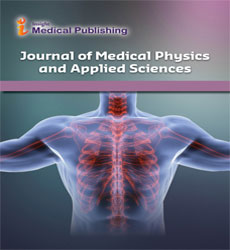Advancements in Dosimetric Devices and Patient-Specific Solutions for Radiation Therapy
Christopher H Crane
Department of Radiology, Ferdowsi University of Mashhad, Mashhad, Iran
DOI10.36648/2574-285X.9.4.81
Christopher H Crane*
1Department of Radiology, Ferdowsi University of Mashhad, Mashhad, Iran
- *Corresponding Author:
- Christopher H Crane,
Department of Radiology, Ferdowsi University of Mashhad, Mashhad, Iran
E-mail: christopher@gmail.com
Received date: November 25, 2024, Manuscript No. IPIMP-24-20076; Editor assigned date: November 27, 2024, PreQC No. IPIMP-24-20076 (PQ); Reviewed date: December 11, 2024, QC No. IPIMP-24-20076; Revised date: December 18, 2024, Manuscript No. IPIMP-24-20076 (R); Published date: December 26, 2024, DOI: 10.36648/2574-285X.9.4.81
Citation: Crane CH (2024) Advancements in Dosimetric Devices and Patient-Specific Solutions for Radiation Therapy. J Med Phys Appl Sci Vol.9.No. 4: 81.
Description
3D printing, also known as additive manufacturing, is transforming industries ranging from healthcare to aerospace with its ability to create complex structures layer by layer. One of its potential applications is in dosimetry, which involves the measurement and calculation of the radiation dose absorbed by tissue. As precision becomes a critical component in radiation therapy for cancer treatment, 3D printing is providing innovative solutions that improve accuracy and efficiency. This article delves into the advancements in 3D printing in dosimetry under two key sections. Dosimetric devices are essential tools in ensuring that the correct amount of radiation is delivered to target areas while minimizing exposure to surrounding healthy tissues. Traditional dosimetry methods often face limitations in flexibility, cost and adaptability to complex geometries. The integration of 3D printing into dosimetry has addressed these challenges by offering highly customizable and cost-effective solutions. Phantoms, or tissue-equivalent materials, are widely used in dosimetry to simulate human anatomy and measure radiation absorption. The traditional production of phantoms using materials like plastic or resin is time-consuming and lacks personalization. With 3D printing, highly precise and anatomically accurate phantoms can be created, mirroring patient-specific organs or tumors. 3D-printed phantoms allow for the incorporation of heterogeneities such as bones, air cavities and soft tissues, enabling more accurate dose calculations. For e.g, phantoms with intricate structures mimicking lung tissue or cranial anatomy can be printed using specific materials to replicate different tissue densities. These advanced phantoms not only improve calibration accuracy but also improve the testing of new radiation therapy devices.
Development of innovative dosimeters
Conventional dosimeters, such as ionization chambers and thermoluminescent dosimeters, are often constrained in their design and performance. 3D printing has facilitated the creation of novel dosimeter prototypes with customizable geometries and superior functionality. For instance, researchers have developed 3D-printed dosimeters embedded with radiochromic films, which change color upon exposure to radiation. These devices can provide real-time visualization of dose distribution. Additionally, 3D printing enables the fabrication of polymer gels and other materials embedded with dosimetric properties. These gels can be shaped into any geometry to match the contours of treatment areas, allowing for accurate measurement of dose gradients in complex scenarios. This level of customization ensures that dosimeters can adapt to various clinical needs, improving treatment planning and quality assurance. Radiation therapy relies heavily on precision to ensure that the intended dose is delivered to the target while sparing healthy tissues. Patient-specific solutions, made possible by 3D printing, are revolutionizing this aspect of dosimetry. Boluses are materials placed over the patient’s skin to ensure uniform dose distribution in areas where the radiation beam would otherwise be unevenly absorbed.
Enhanced quality assurance
Treatment planning in radiation therapy involves simulating and optimizing the delivery of radiation to achieve the desired therapeutic outcome. Quality assurance processes are critical to ensure that the planned dose matches the delivered dose. 3D printing has significantly improved QA by enabling the creation of patient-specific QA phantoms. These phantoms, derived from patient imaging data, can mimic the exact geometry and tissue composition of the treatment area. By testing the radiation dose on these phantoms before administering it to the patient, clinicians can verify the accuracy of the tre atment plan. This reduces the risk of errors and enhances the safety of radiation therapy. Traditional boluses are often made from generic materials, which may not conform perfectly to the patient’s anatomy. This can lead to dose inaccuracies and reduced treatment effectiveness. With 3D printing, personalized boluses tailored to the patient’s body contours can be created. By using CT (Computed Tomography) or MRI (Magnetic Resonance imaging) scans, 3D models of the treatment area are generated, allowing for the production of boluses that fit perfectly. This ensures optimal dose delivery while improving patient comfort. Furthermore, 3D printing can produce immobilization devices, such as head and neck masks that securely position patients during therapy, minimizing movement and improving precision.
Open Access Journals
- Aquaculture & Veterinary Science
- Chemistry & Chemical Sciences
- Clinical Sciences
- Engineering
- General Science
- Genetics & Molecular Biology
- Health Care & Nursing
- Immunology & Microbiology
- Materials Science
- Mathematics & Physics
- Medical Sciences
- Neurology & Psychiatry
- Oncology & Cancer Science
- Pharmaceutical Sciences
